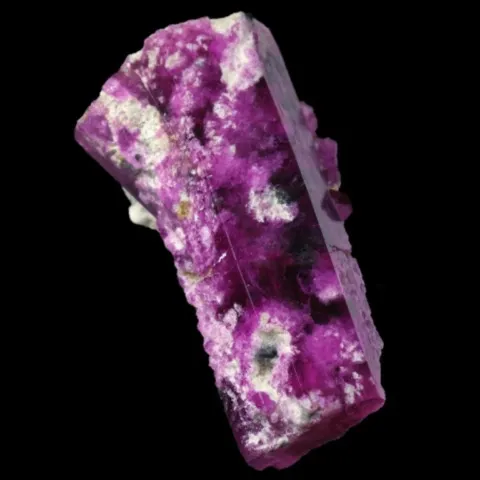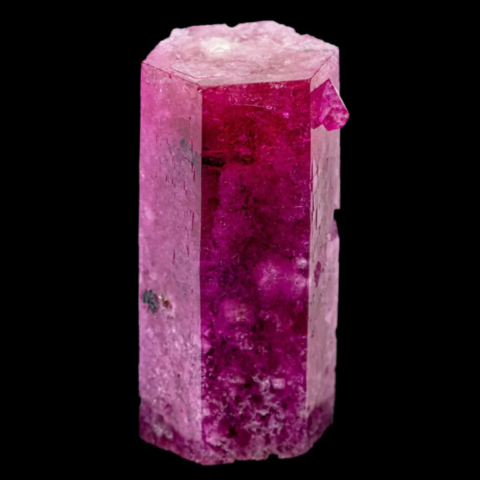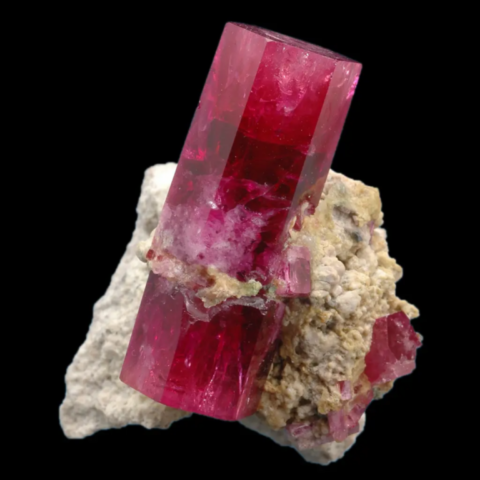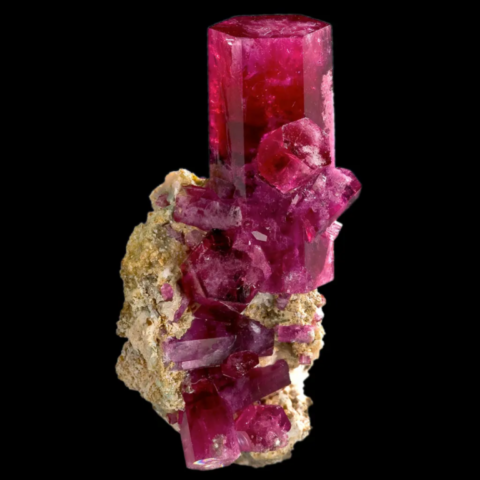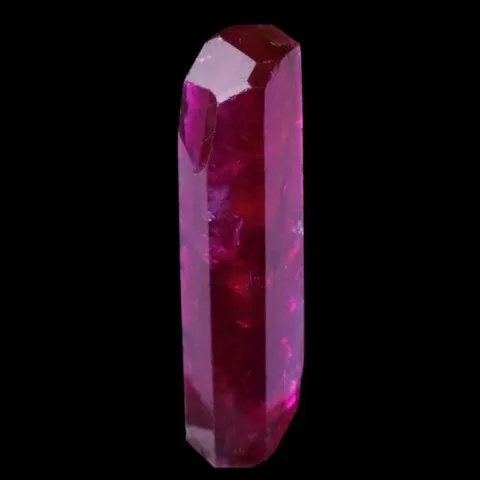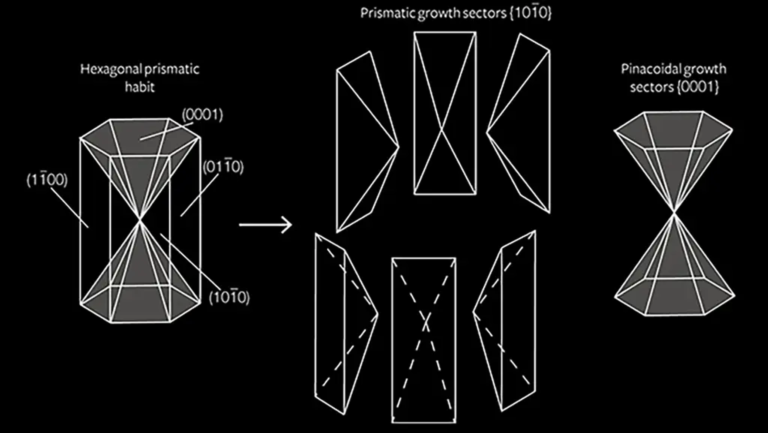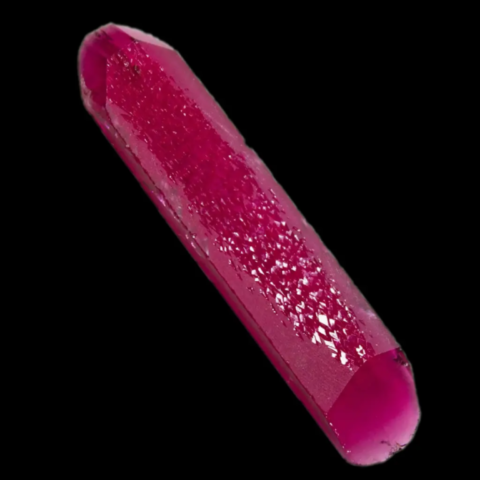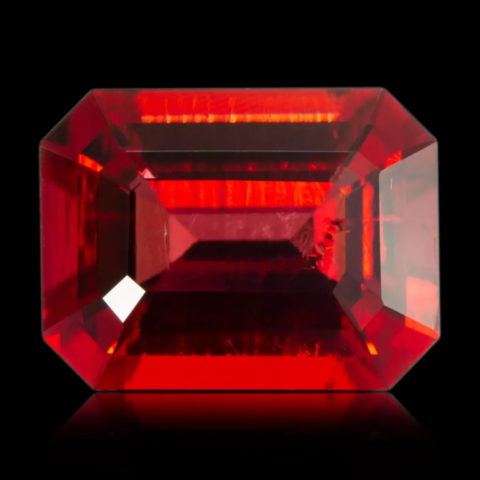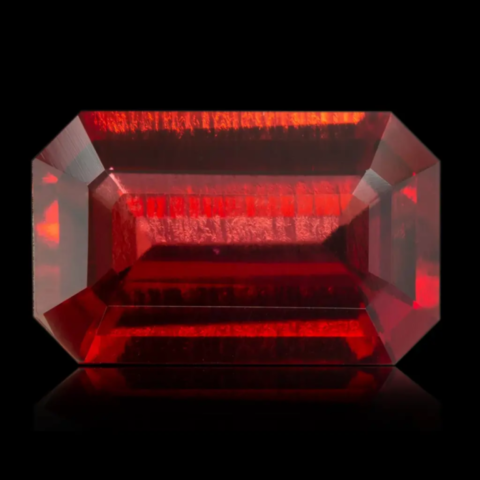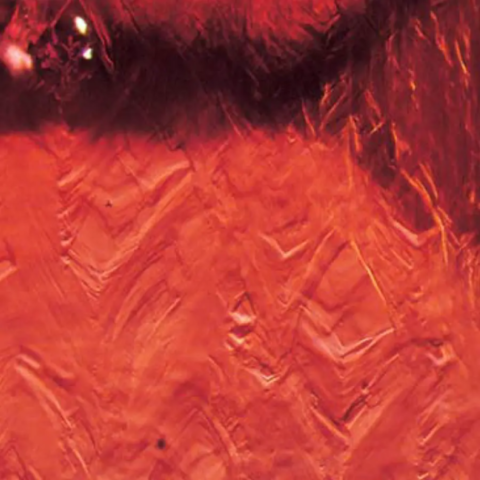The Russian synthetic red beryls
Natural red beryl is an extremely rare gemstone, found primarily in the Wah Wah Mountains of Utah, USA. Due to its rarity and high price, scientists have sought to create a synthetic version. The Moscow Institute of Crystallography, in collaboration with Emcom Ltd., has developed a process for producing synthetic red beryls through hydrothermal growth. This article explores the production, properties, and techniques for identifying these synthetic crystals.
Origin and production of synthetic red beryls
While the synthesis of emeralds has been mastered for several decades, that of beryls of other colors is more recent. The production of synthetic red beryls began in Russia in the mid-1990's, motivated by the commercial appeal of this rare gem. Although their production has slowed down due to limited demand, these stones continue to circulate on the market.
Hydrothermal growth method
Synthetic red beryls are manufactured using a hydrothermal process requiring temperatures above 600°C and pressures exceeding 2000 bars maintained over long time intervals in receptacles called "autoclaves". Crystal growth is carried out from a thin plate of synthetic beryl or synthetic emerald used as a support and held by a copper wire. To obtain their characteristic color, manufacturers introduce cobalt and manganese into the autoclave, accompanied by iron and alkaline elements.
The crystals obtained have a tabular to hexagonal prismatic shape and are most often elongated parallel to the starting plate. They have well-defined morphological characteristics, with prisms and dipyramids, as well as internal chevron growth patterns and slightly wavy structures.
Photo : 3.4 cm Russian synthetic red beryl © Rémi Bornet
Gemological characteristics of synthetic red beryls
Synthetic red beryls have optical and physical properties that distinguish them from their natural counterparts. Their refractive index generally varies between 1.569 and 1.580 with a birefringence between 0.006 and 0.008. These values, although quite close to those of natural beryl, are slightly lower, in particular due to the chemical composition of synthetics which are depleted in alkaline elements.
Their density oscillates between 2.67 and 2.70, a value similar to that of natural beryl. Their pleochroism is marked and presents two distinct hues : a red-purple hue when observed parallel to the crystal axis and a red-orange to orange-brown hue when observed perpendicular to this axis. Under ultraviolet light, synthetic red beryls do not exhibit any fluorescence, either under short or long UV.
As for their color distribution, it is generally uniform in cut stones, although some brownish zones can be observed in rough crystals. Unlike natural red beryls, which often exhibit hourglass-shaped zoning patterns, synthetic beryls instead exhibit internal chevron zoning or wavy growth patterns.
Identification of synthetic red beryls
The identification of synthetic red beryls is based on the examination of their inclusions, their absorption spectrum and their chemical composition.
The analysis of inclusions reveals distinctive characteristics of synthetic stones. Synthetic red beryls often have a herringbone growth structure, with slightly wavy zonation bands. This type of zonation is completely absent in natural red beryls. Some partially healed fractures are also visible, containing small liquid or gaseous inclusions. In addition, rare solid inclusions can be observed, such as hematite platelets or triangular inclusions, the exact nature of which remains uncertain.
Spectroscopic analysis also reveals marked differences between synthetic and natural beryls. In the visible spectrum, synthetic beryls have several distinct absorption bands located between 530 and 590 nm, caused by the presence of cobalt. On the other hand, natural red beryl displays a broad absorption band centered around 560 nm, due to the presence of trivalent manganese. This spectral difference allows reliable identification of the synthetic material.
Infrared spectroscopy examination is another identification criterion. Synthetic red beryls show strong absorption in the region between 4200 and 3200 cm-1, characteristic of the presence of water in their structure. Conversely, natural red beryls from Utah contain very little water and do not display this absorption in this area of the spectrum.
Finally, chemical analysis, carried out by X-ray fluorescence (EDXRF) or electron microprobe, allows the elemental composition of the stones to be identified. Synthetic beryls systematically contain cobalt and nickel, two elements that are completely absent from natural beryls. In contrast, natural beryls are distinguished by the presence of cesium, tin and zinc, elements that are not detected in their synthetic counterparts.
Conclusion
Synthetic red beryls made in Russia are an attractive alternative to natural red beryls, which are both rare and expensive. Due to their production by hydrothermal growth, these stones have optical and physical properties similar to those of natural beryls, although they are still easily identifiable by experienced gemologists. Inclusion analysis, examination of absorption spectra and chemical analysis help to authenticate these materials and avoid confusion in the gemological market.
References :
BARLOW J.F. (1979) Red beryl of the Wah Wah's. Lapidary Journal, Vol. 32, No. 12, pp. 2540-2570.
HILLEBRAND W.F. (1905) Red beryl from Utah. American journal of Science, 4th series, Vol. 19, pp. 330-331.
RAKOVAN J., KITAMURA M., TUMADA O. (2006). Sakura ishi (cherry blossom stones): Mica pseudomorphs of complex cordierite-indialite intergrowths from Kameoka, Kyoto Prefecture, Japan. Rocks and Minerals, Vol. 81, No. 4, pp. 284–292
SHIGLEY, J. E., & FOORD, E. E. (1985). Gem-quality red beryl from the Wah Wah Mountains, Utah. Gems & Gemology, Winter 1984, 208-220
SHIGLEY, J. E., THOMPSON, T. J., & KEITH, J. D. (2003). Red beryl from Utah: A review and update. Gems & Gemology, Winter 2003, 302-313.

